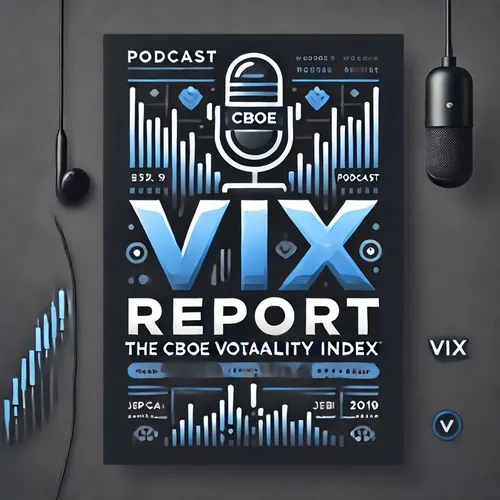Declining Volatility Index Signals Optimistic Market Sentiment in May 2025
- Author
- QP-1
- Published
- Tue 20 May 2025
- Episode Link
- https://www.spreaker.com/episode/declining-volatility-index-signals-optimistic-market-sentiment-in-may-2025--66166090
The Cboe Volatility Index (VIX), commonly known as the "fear index," has seen a noticeable decline, reflecting a shift in market sentiment as of May 16, 2025. The VIX, which measures the market's expectations for volatility in the S&P 500 index over the next 30 days, stood at 17.24. This level represents a significant decrease from 17.83 on May 15, 2025, marking a percent change of approximately -3.3%.
The decline in the VIX indicates improved market sentiment and reduced anxiety among investors. Several factors typically influence such movements, including market sentiment, economic data, geopolitical stability, and overall market performance. In this case, the falling VIX suggests that market participants are becoming more optimistic, with less fear of impending volatility.
Market sentiment is a crucial driver of the VIX. A decrease in the index often implies that investors perceive less risk in the market’s near-term future. Positive economic indicators can contribute significantly to this optimism. For example, strong employment data, stable inflation rates, or robust consumer spending can lead to a more optimistic outlook on economic stability, thereby driving the VIX lower.
Geopolitical factors also play a role in shaping the VIX levels. Stability in international relations or the absence of conflict lowers the fear of global disruptions, which can otherwise spook markets and drive up the VIX. The current downward trend in the VIX may be attributed in part to a stable geopolitical landscape, allowing investors to focus more on economic fundamentals rather than external threats.
Moreover, the performance of the S&P 500 and other major indices directly influences the VIX. A rally in equity markets typically coincides with declining volatility, as confidence in economic growth leads investors to demand less of a premium for taking on additional risk. Thus, a rising stock market often encourages a lowering of the VIX, as seen in recent trends.
Analyzing recent data reveals a clear downward trajectory for the VIX. Leading up to May 16, the index has been consistently falling, suggesting that concerns over market volatility have diminished. The VIX levels for the preceding days were 17.83 on May 15, 18.62 on May 14, 18.22 on May 13, and 18.39 on May 12. This steady decline points to improving investor confidence possibly driven by positive economic signs or stable market conditions.
The ongoing downward trend in the VIX may
